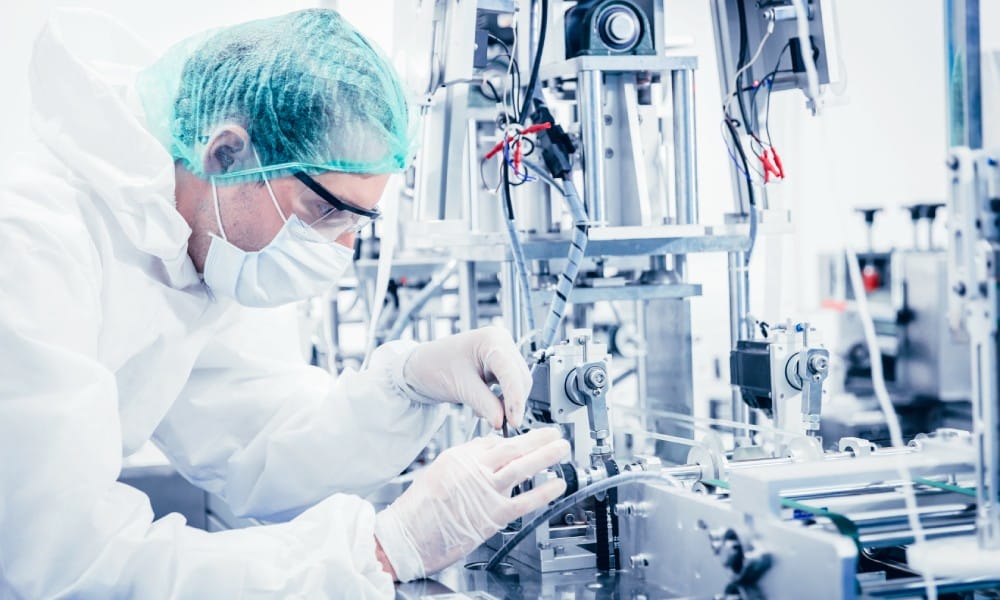Author’s Note: This article discusses medtech manufacturing from an economic perspective, as a colossal lever that shifts global supply chains and pumps billions of dollars into and out of the United States. However, beneath all of this, there is one single essential issue and that is healthcare. Human lives depend on access to medical technology, and not just specialized equipment; they depend on plastic gloves and syringes and face masks. This issue is urgent because the bottom line has lives on it.
First, Do No Harm? The Risk of Section 232 Tariffs
In September 2025, the U.S. Department of Commerce initiated a Section 232 investigation of imports of personal protective equipment (PPE), medical consumables, and medical equipment, including devices. While framed as a measure to strengthen national security and promote domestic manufacturing, organizations including the Medical Device Manufacturers Association (MDMA), the American Hospital Association (AHA), the Advanced Medical Technology Association (AdvaMed), the U.S. Chamber of Commerce, the Health Industry Distributors Association, and the National Association of Manufacturers have publicly and unilaterally raised concerns about the potential ramifications of imposing Section 232 tariffs on medical imports.
Namely, that they could inadvertently undermine their own purpose, ultimately weakening U.S. competitiveness, straining hospitals’ ability to provide care, and discouraging the investment needed to expand domestic production capacity.
A Global Powerhouse in MedTech Manufacturing
The U.S. medtech sector is not in decline. It is, in fact, the world’s leading producer of medical technology, generating more than $250 billion in annual output and supporting nearly three million American jobs. Of the top 15 medtech companies globally, 12 are based in the U.S., and in 2024, the industry exported $80 billion worth of medical devices, surpassing exports of automobiles, semiconductors, and natural gas.
U.S.-made technologies already supply about 70% of the domestic market (while low-margin devices and PPE are primarily manufactured overseas). The sector is also one of America’s most research-intensive industries, investing over $20 billion annually in R&D. These investments support rapid innovation cycles, with new product variants often reaching the market every one to two years. And it pays off. Over the past 30 years, the U.S. has led some of the most transformative advancements in modern medicine, such as pacemaker technology and early cancer detection tests, and holds a competitive advantage worldwide.
Yet even the most “American-made” medical devices rely on deeply interconnected global supply chains. A single MRI machine or infusion pump can contain parts from over a dozen countries. That’s not a weakness. That is precisely what allows for innovation.
How Tariffs Could Disrupt MedTech Innovation
If the Section 232 investigation results in tariffs, those costs will ripple through every layer of the system. The MDMA warned that such measures could “needlessly disrupt a globally integrated industry that already meets domestic demand,” while the AHA cautioned that higher import costs could disrupt procurement and increase hospital expenses. Cost spikes threaten to slow product launches, reduce R&D investment, and raise prices for hospitals and patients alike.
Innovation in medtech depends on fast, affordable access to specialized components and materials. Tariff-driven friction constrains progress in an industry where new technologies are brought to market every year. Rather than accelerating reshoring, tariffs risk diverting capital away from innovation and toward cost management.
How Manufacturers Are De-Risking Supply Chains
Amid policy uncertainty, medtech manufacturers are taking proactive steps to de-risk their supply chains. Many are turning to nearshoring, expanding production across North America, particularly in Mexico and Costa Rica, to reduce exposure to Asia-Pacific risks while benefiting from skilled workforces and proximity to the U.S. market.
At the same time, automation and digital transformation are reshaping how medtech products are made and delivered. Investments in robotics, additive manufacturing, and smart supply chains are improving efficiency, quality, and resilience while reducing dependence on offshore labor.
Finally, digital manufacturing networks help companies maintain access to critical materials and components amid trade disruptions. By linking suppliers across multiple regions, these networks enable flexible sourcing, allowing manufacturers to reroute production, maintain quality and compliance, and continue developing new technologies without interruption.
Smart diversification, not isolation, is the key to building resilience.
A Healthier Path Forward
Policymakers and industry leaders share a common goal: a secure, competitive, and innovative U.S. medtech base. Yet Section 232 tariffs risk undermining it. Instead of broad import levies, the U.S. should pursue targeted incentives, R&D investment, and supply chain mapping to strengthen domestic production while preserving affordability and speed.
Total self-sufficiency isn’t feasible or necessary. The strength of America’s medtech industry depends on global collaboration and manufacturing agility in addition to building smart, connected networks that expand domestic capability while keeping innovation fast, affordable, and accessible for all.

Dave Evans
Dave Evans is the CEO and Co-Founder of Fictiv, a global supply chain and manufacturing company for custom mechanical products. Dave is a regular contributor for Fast Company and Forbes, has been featured on NBC News, Nasdaq, TechCrunch, and Discovery, and was named to Forbes 30 Under 30 list. Dave was the first hire at Ford’s Silicon Valley Innovation Lab and graduated from Stanford University with a B.S. in Mechanical Engineering. Dave is a hands-on dad of two, husband, builder, and creator.







